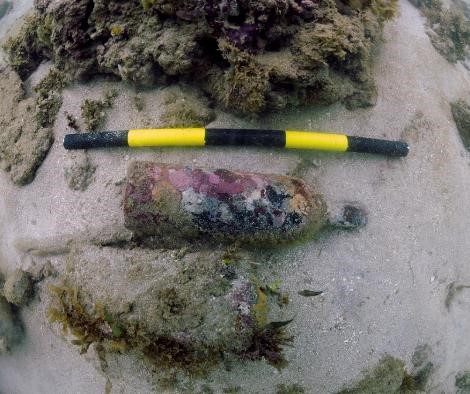
A bottle was located at the Brick Site on the surface of the site on the eastern side of the baseline, covered in algae and sponges, had no signs of damage, and contained sediment.
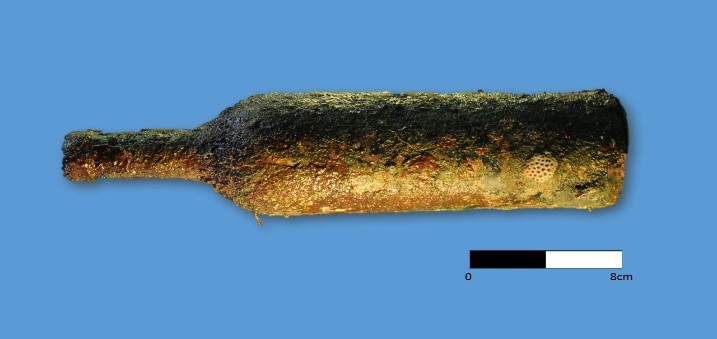
A dive team consisting of Kevin Rodriguez and Anderson Rodriguez under supervision of Dr. Lynn Harris, Dr. Jason Raupp, and Dr. Nathan Richard were tasked with the recovery of the bottle. Using a milk crate, the team descended on the bottles location and carefully removed it from the site into the crate. A metal pin was placed where the bottle was. This location was mapped using a total station. One in the crate, the dive team swam over to the boat and handed the crate up to Sean Cox and Dorothy Sprague. Once on the boat the bottle was placed in a tub filled with sea water.
The bottle was removed from its container to be recorded digitally. Tyler Ball, Sean Cox, and Dr. Nathan Richards set up a station using green screens to conduct photogrammetry. Kristina Fricker then illustrated the bottle(figure 6.7). The measurements taken are the following: kickup of pontil mark 7.2cm, total length 29cm, widest point 7.7cm.
The bottle was taken to a veterinary clinic in order to x-ray the bottle in order to see if there was any additional objects in the sediment within the bottle. The x-rays did not reveal any additional small artifacts within the bottle.
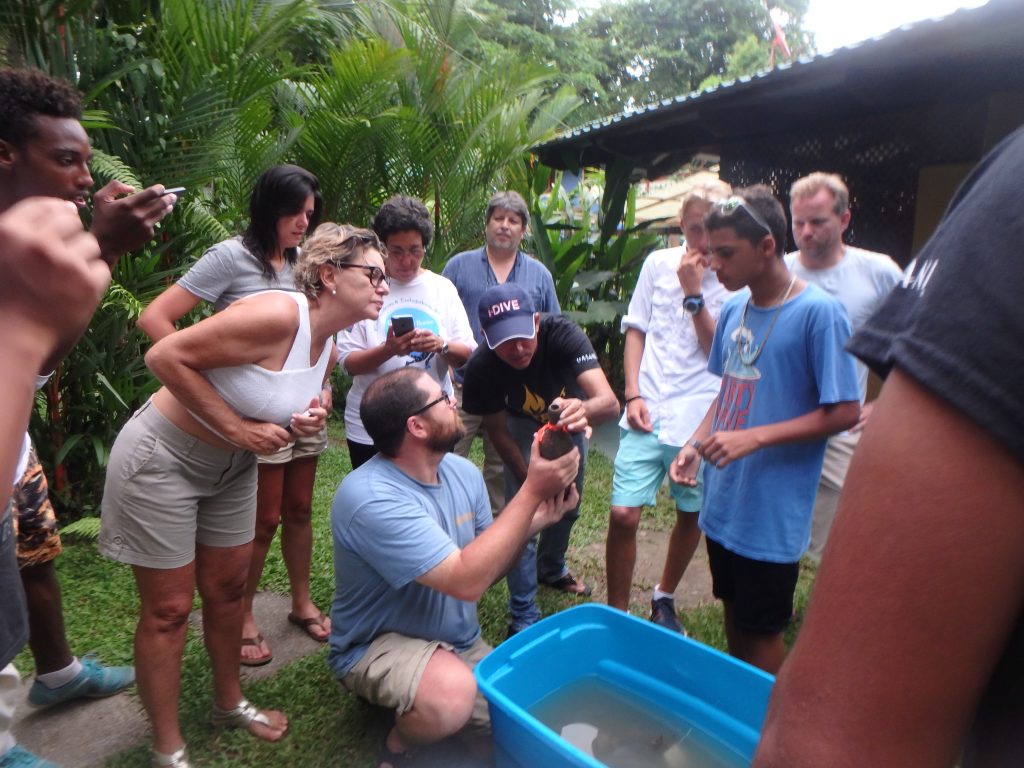
After the recovery and recording of the bottle the next set in the process was conservation and storage. The bottle was turned over to rangers of the Cahuita National Park Service for temporary and storage. Handing over of the bottle to local authorities for storage was done at an event in Cahuita with the local community to build interest and keep the public informed about what we had recovered.
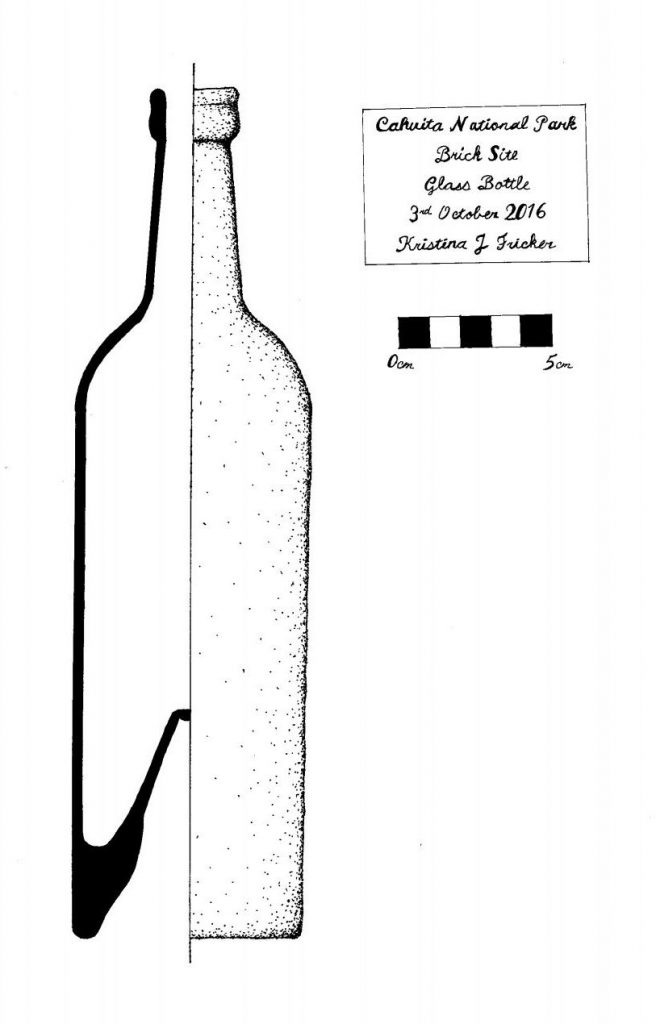
The next step in the research was identification of the bottle. Glass bottles are well recorded in historical archaeological record and a number of sources can be drawn upon to determine the type of bottle it is. The base pushes deep within the bottle (7.2cm). Additionally the bottle appears to be made of blown glass with an olive/dark green tint. Based on the preliminary data that we have it appears that the bottle is a Bordeaux style bottle.
The name refers to the Bordeaux region wines which included cabernet sauvignon, claret, and sauterne wines in France. The bottles have a tall body and the base has a deep push up. This bottle type dates back to at least 1840. The image below is a similar bottle found from the steamship Republic and has been dated to the mid 1860’s.
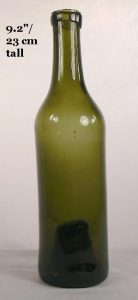
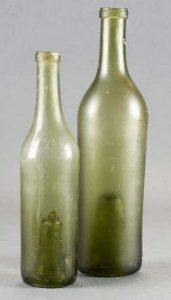
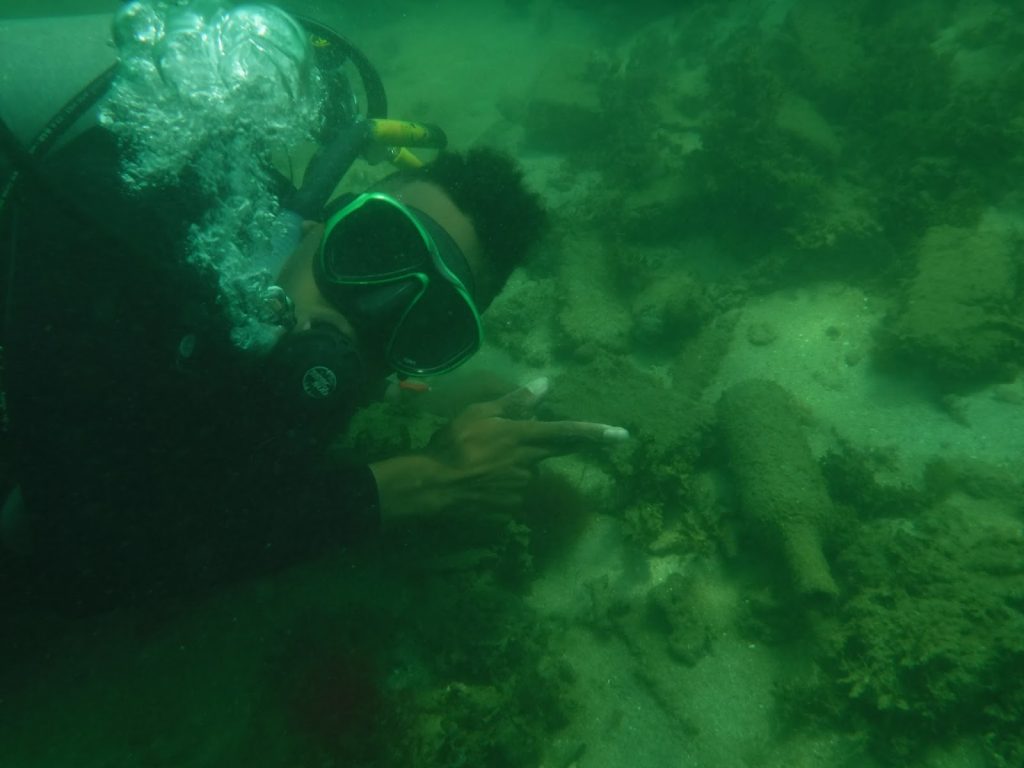
Given the historical data of the shipwreck thought to be on the Brick Site and the fact the bottle was found on the surface there is a strong possibility that the bottle is not related to the Brick Site. However, in terms of site formation processes it is important to determine how the bottle got to the site.